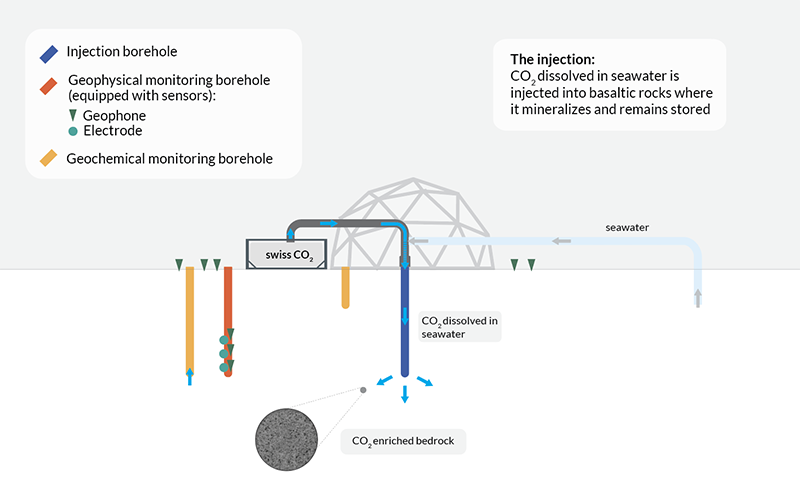DemoUpStorage

|
The Swiss Energy Strategy foresees CO2 capture and underground storage, possibly abroad, among the necessary measures to reach the net zero target by 2050. DemoUpCARMA, the partner project of DemoUpStorage, explores as one pathway to negative emissions the transport and storage of Swiss biogenic CO2 in Islandic basalt as well as this pathway’s potential for upscaling. Since a safe and permanent storage of the Swiss CO2 is an indispensable requirement, DemoUpStorage takes the lead in closely monitoring the injection and the dispersion of the Swiss CO2 in the Islandic underground at a site that has high potential for upscaling. For the injection, a novel technique is used, where the CO2 is dissolved in sea water instead of fresh water. The findings of DemoUpStorage will further advance the Swiss Roadmap for geological CO2 storage through knowledge acquisition and transfer, as well as capacity building.
DemoUpStorage has the following objectives:
|
|---|---|
| Chef de projet au SED | Prof. Dr. Stefan Wiemer |
| Membres du projet au SED | Dr. Alba Zappone, Dr. Anne Obermann, Dr. AntonioPio Rinaldi, Dr. Michèle Marti, Dr. Irina Dallo, Stefanie Zeller, Jonas Junker |
| Source de financement | SFOE, FOEN |
| Durée | 2022-2024 |
| Mots-clef | CO2 storage, monitoring CO2 mineralization |
| Domaine de recherche | CO2 storage |
| Website | https://demoupstorage.ethz.ch |
Stavropoulou E, Laloui L (2023). CO2 storage in basalts: the impact of mineralisation on the hydromechanical response of the material. Proceedings of the 9ICEG 9th International Congress on Environmental Geotechnics 25-28 June, 2023 | Chania, Greece. doi: 10.53243/ICEG2023-115